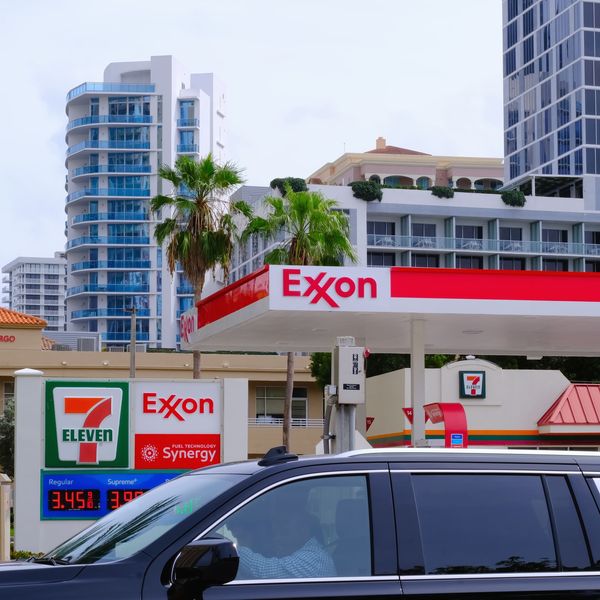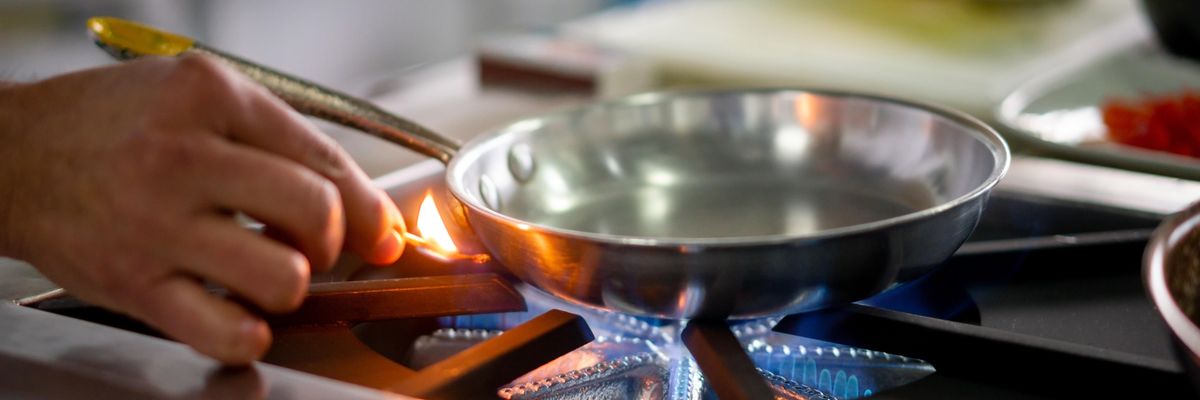We were squeezed together in the small, upstairs bedroom of a single-family home in D.C.’s Columbia Heights neighborhood. George, the homeowner and father of a nine-month-old, had brought us there to test for nitrogen dioxide emissions from his gas stove.
Nitrogen dioxide (NO2) is one of several pollutants created when gas is burned. A pulmonary irritant, NO2 is invisible, odorless, and linked to asthma and other health concerns. A recent study found that NO2 may affect child cognitive development, with higher exposure in infants associated with increased risk of behavioral problems later on. There is no indoor safety standard for NO2, but the Environmental Protection Agency has established an outdoor health protective standard of 100 parts per billion for one-hour exposure. George’s kitchen had registered an alarming 294 ppb.
George had asked us to test his nursery upstairs, well away from the gas stove. We placed the detector in the crib and waited. Then, a reading of 190 ppb flashed across the screen—nearly twice the EPA’s maximum exposure limit.
There is no reason a nine-month-old—or any of us—should be breathing health-harming nitrogen dioxide in our homes.
George’s house was one of nearly 700 D.C. and Maryland homes we tested as part of a community study to investigate hazardous emissions from gas. We chose to focus on gas stoves because they are located in the middle of families’ living areas and generally not vented outside. In apartments, single-family homes, condos, and row houses, we recorded NO2 levels 15 minutes and 30 minutes after turning on the stove, and took a third reading 15 minutes after turning the stove off.
Nearly two-thirds of the kitchens we tested registered NO2 levels exceeding 100 parts per billion. In D.C., 77% of kitchens register NO2 over 100 ppb, with an average high reading of 181 ppb.
The stories are endless. In an American University student apartment NO2 levels spiked to 862 ppb—over eight times the recommended limit—and only decreased after turning on a vent fan. In other homes, ventilation fans seemed to have no impact at all. We found significant NO2 in the upstairs bedrooms we tested. Some kitchens tested had elevated NO2 levels one or two hours after the gas stove was turned off.
Increasing ventilation can help reduce NO2 exposure from gas stoves. But to protect D.C. and Maryland residents from the health-harming impacts of NO2, policymakers must act to help households move to pollution-free, efficient electric appliances such as induction cooktops.
Induction cooking is becoming the preferred choice among chefs due to its efficiency, safety, and ease of use. Chef Jon Kung switched to induction cooking because his building lacked ventilation and gas stoves produced indoor air pollution. Award-winning chef Eric Ripert says he “fell in love” with induction within days.
Induction cooktops rely on electromagnetism to transfer heat to the pan, eliminating the combustion that creates NO2. About 90% of the energy goes toward cooking food, while gas stoves waste 70% of their energy heating the surrounding air. With no flame and little residual heat, induction stoves keep kitchens cool, reduce the risk of burns, and are easy to clean.
Officials in D.C. and Montgomery Country have already taken steps to incentivize electrification, including adopting healthy building standards that ensure new homes are built with electric equipment. Low-income D.C. residents can now apply for free home upgrades to install clean energy heating and cooking equipment thanks to the recent passage of the Healthy Homes Act.
These are steps in the right direction, but policymakers must do more to reduce reliance on fossil fuel infrastructure and to block gas companies from spending consumer money on new pipelines that raise costs for customers and lock in our reliance on gas.
With an influx of federal and state incentives, now is the best time to electrify. D.C. recently unveiled programs funded by the Inflation Reduction Act, which provide up to $800 for an induction cooktop and $2,000 for an electric panel upgrade to income-eligible residents. Federal tax breaks for clean, efficient heating equipment and cooking equipment are available to all residents regardless of income.
Our Beyond Gas study shows that burning fossil fuels in our homes is exposing us to pollutants that make us sicker. There is no reason a nine-month-old—or any of us—should be breathing health-harming nitrogen dioxide in our homes. Clean energy alternatives are available and far superior. Our leaders need to act now to help D.C. and Maryland residents make this change.



